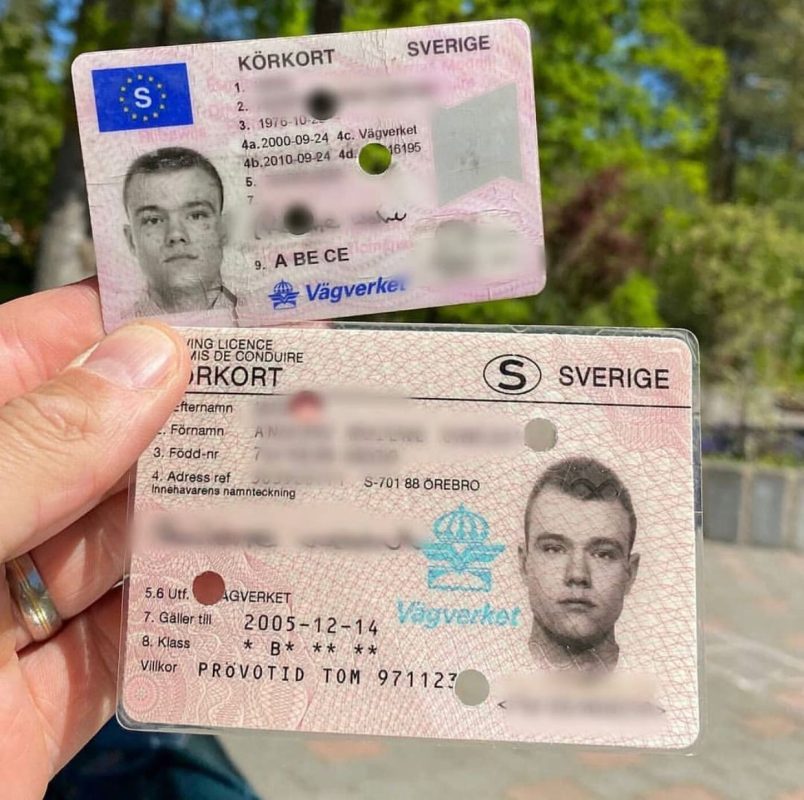Navigating the New Landscape of Driving License ID Handling in 2025
In every society, the driving license works as a crucial document, not simply as a proof of the capability to run a lorry however likewise as an identification tool. As we step into 2025, significant modifications have emerged relating to the handling and management of driving licenses, mainly affected by advances in innovation, evolving policies, and the need for enhanced security procedures. Körkort Online aims to deliver a detailed overview of driving license ID dealing with in 2025, clarifying the technologies involved, the approaching legal transformations, and offering answers to typical questions.
The Transition to Digital Driving Licenses
Among the most noteworthy changes in driving license ID handling is the widespread adoption of digital driving licenses. These digital licenses are saved electronically on smartphones, using numerous benefits to both chauffeurs and authorities. In the United States, for example, numerous states have begun executing digital chauffeur's licenses, while nations such as Canada and the UK are expected to do the same soon.
Secret Benefits of Digital Driving Licenses
- Convenience: Easily available on mobile gadgets, eliminating the need to carry physical copies.
- Enhanced Security: Incorporating biometric features and file encryption helps to combat identity theft and scams.
- Real-time Updates: Immediate updates to personal details, such as changes in address or status, improve accuracy.
Difficulties and Concerns
Despite the benefits, the transition to digital licenses provides difficulties, including issues about personal privacy, cybersecurity risks, and the digital divide affecting those without access to smartphones or the internet.
Changes in Regulatory Framework
As we head into 2025, a number of regulations surrounding driving licenses have actually come under examination and improvement. Governments and regulative bodies are focusing on making sure that driving licenses are protected, valid, and released in compliance with recognized laws.
Secret Legislative Trends
- Standardized ID Formats: Countries are moving towards a standardized format for driving licenses to improve recognition and improve security.
- Increased Verification Procedures: Authorities are now utilizing advanced approaches such as facial acknowledgment and AI to improve confirmation procedures at checkpoints.
- Focus on Sustainability: With growing ecological concerns, many states are choosing for eco-friendly materials for physical licenses and exploring robust digital options.
- Age and Identity Verification: Enhanced steps are being put in place to accurately validate the age and identity of motorists, particularly in contexts where age-related laws use to driving.
The Global Perspective: State-By-State Comparison
| Country | Digital License Implementation | Existing Regulations | Notable Features |
|---|---|---|---|
| United States | Several states in development | Differs by state, efforts to merge formats | QR codes for simple recognition |
| Canada | In pilot phases | Standardized recognition across provinces | Integration with health IDs |
| UK | Early adoption stage | Emphasis on online renewal and information updates | Digital confirmation via the app |
| Australia | Under factor to consider | Progressively strict recognition protocols | Focus on fraud avoidance |
The Role of Technology in ID Handling
Technology is revolutionizing how driving licenses are dealt with. AI, blockchain, and biometrics are becoming integral to driving license issuance and confirmation.
Innovations Shaping the Future
- Artificial Intelligence: AI algorithms are now made use of for acknowledging patterns in driving behaviors, which can inform insurance coverage premiums and legal ramifications.
- Blockchain Technology: Ensuring the integrity and authenticity of driving license information, blockchain innovation enables safe and secure sharing of info between authorities without worry of tampering.
- Biometrics: Increasingly, biometric systems are implemented at the point of issuance and confirmation, such as facial acknowledgment and finger print scanners, to make sure secure identity confirmation.
Possible Impacts of Emerging Technologies
The execution of these innovations can cause enhanced dependability and security of driving IDs, however it raises questions about data personal privacy and user approval.
Frequently Asked Questions (FAQs)
1. What should I do if my digital driving license is lost or taken?
You ought to right away report the loss or theft to your local motor vehicle company. Most digital licenses have built-in functions to disable access remotely.
2. Are digital driving licenses accepted all over?
As of 2025, acceptance of digital licenses differs by area. It's advised to bring both digital and physical copies when taking a trip across state or nationwide borders.
3. Can I upgrade my information on a digital driving license?
Yes, updates can frequently be made through the associated mobile application or website of the providing authority.
4. What are the security steps for digital licenses?
Digital licenses usually incorporate functions such as encryption, two-factor authentication, and biometric confirmation to boost security.
5. How will standard driving licenses be impacted?
The relocation towards digital licenses might decrease the issuance of physical licenses, however they will still be available for those not able to gain access to digital alternatives.
As we advance into a brand-new period in 2025, the handling of driving licenses is optimizing to satisfy the demands of contemporary society. Through technological developments and regulative reforms, individuals can expect a more protected, efficient, and structured process for getting and handling their driving licenses. Nevertheless, as digital services proliferate, it remains vital to address challenges relating to personal privacy, security, and availability, ensuring equitable road gain access to for all drivers while safeguarding personal information. As governments across the globe continue to adjust to these modifications, the future of driving license ID handling is set to be both vibrant and transformative.

